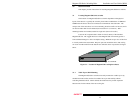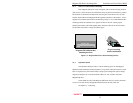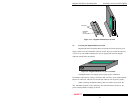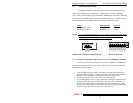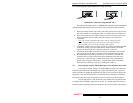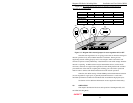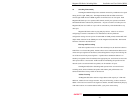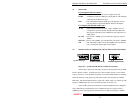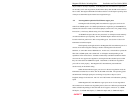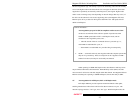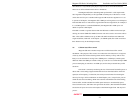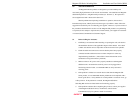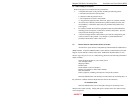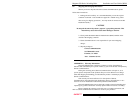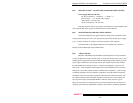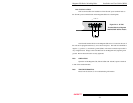
Magnum 500-Series Switching Hubs Installation and User Guide (08/98)
GARRETT
24
cable distance is only limited by the physical layer line driver and cable attenuation.
There are no collision-domain restrictions or limitations.
The Magnum 500-Series Switching Hubs perform half- or full-duplex mode
auto-negotiation independently on all eight 10Mb switched ports. If the device or node
on the other end of a port’s attached cable supports F/H mode auto-negotiation or is set
to operate as full-duplex, the Magnum 500’s 10Mb port will negotiate to run full-duplex.
If the attached device or node doesn’t support F/H mode auto-negotiation (for example, if
it is a 10Mb repeater or a standard 10Mb hub), the Magnum 500’s 10Mb ports will
default to operate at half-duplex.
If needed to extend to a greater distance than the 100 meters available with twisted pair
cabling, an external 10Mb fiber Media Converter unit can be used to convert the cable to
fiber. Fiber cable at 10Mb can run up to 2Km with multi-mode fiber and 15Km with
single-mode fiber, either half- or full-duplex. (At 100Mb speed, fiber cable can achieve
these distances only in the full-duplex mode).
4.6 Collision-based Flow-control
Magnum 500 series switches incorporate a collision-based flow-control
mechanism. The purpose of flow-control is to reduce the risk of data loss if a long burst
of activity causes the switch to backlog frames until its memory is fill up. This is most
likely to occur when data is moving from a 100Mb port to a 10Mb port, and the speed
difference makes the 10Mb port unable to keep up. It can also occur when multiple 10Mb
ports are attempting to transmit to one 10Mb port, and in other protracted heavy traffic
situations.
The switch is constantly monitoring the size of the internal free-buffer queue. It
detects that it is becoming congested when there are fewer than 256 buffers on the free
queue(out of 1M capacity). At that time, the switch prevents frames from entering the
device by forcing a collision indication on all half-duplex ports (except for the ports on
which the switch is transmitting). When the switch has transmitted some of the backlog
from its buffer, and the available free-buffer queue increases to more than256 spaces,
forced collisions cease, and frames can again enter the switch. (The 256 buffer threshold
ensures that all ports can receive and complete a maximum-length frame that may be in
process.



